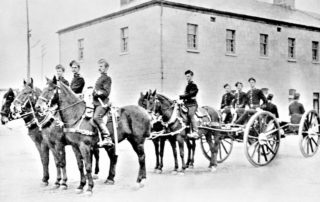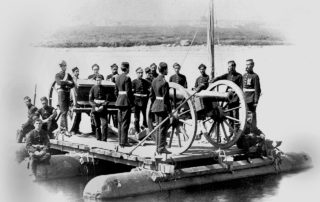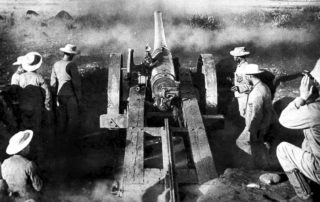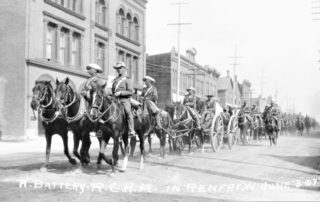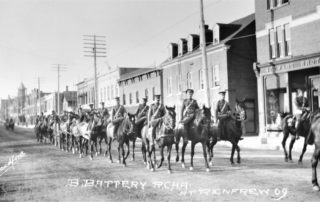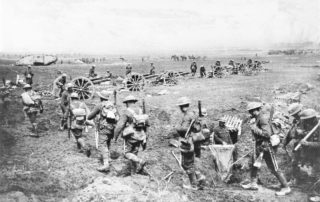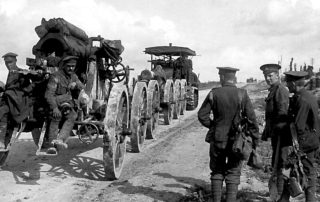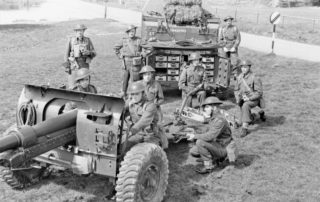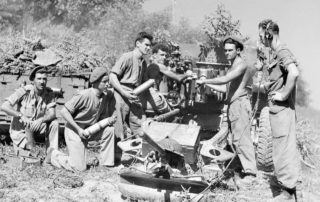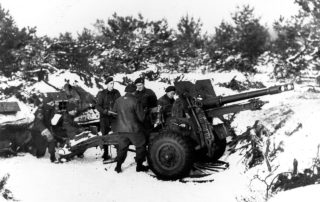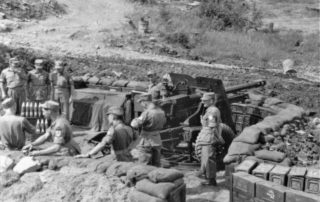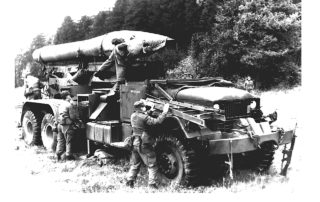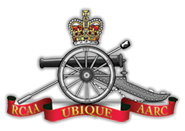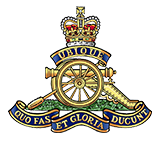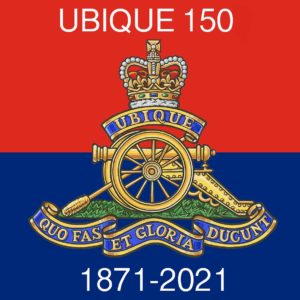 Our Story – A Canadian Milestone
Our Story – A Canadian Milestone
The First Elements of a Regular Army
The 150th anniversary, in 2021, of the establishment of A and B Batteries – the first “full-time” or “regular” elements of the post-Confederation Canadian army – is a significant Canadian military milestone.
Following the American Civil War, Britain’s policy was to make self-governing colonies responsible for their own defence and, in 1871, all Imperial troops in Canada, excepting the Halifax garrison, were withdrawn. In response, Militia General Order No. 24 dated 20 October of that year, authorized the formation of “A” and “B” Batteries of garrison artillery and schools of gunnery at Kingston and Quebec City respectively. They were commanded by Lieutenant Colonels G.A. French and T.B. Strange, on secondment from the British Army, and manned by officers and men on attachment from Active Militia field and garrison batteries around a nucleus of instructors formerly of the Royal Artillery. They were very much “total force” or “one army” units and their impact was profound.
As distinguished Canadian historian George F.G. Stanley states:
” … the Royal Schools of Gunnery at Quebec and Kingston, within a few years, provided the militia artillery with a leaven of well-trained NCOs and gunners which it had never before possessed. Owing to this, perhaps more than to anything else, the artillery established itself as the most efficient branch of the Canadian militia service and acquired a pride in itself which it has never ceased to possess. “[1]
The significance of their establishment transcends the heritage of a single regiment or corps – even one as large and deeply rooted as the artillery. Replacing as they did the withdrawing British Army garrisons; their formation marked a watershed in Canadian military history. Henceforth, Canada would bear responsibility for its defence commensurate with its new political autonomy.
[1] Stanley, George F.G., Canada’s Soldiers: The Military History of an Unmilitary People, Third Edition, (Macmillan of Canada, Toronto, 1974) p. 242.
The Royal Regiment Today
A and B Batteries exist today as sub-units of 1st Regiment, Royal Canadian Horse Artillery. The Royal Regiment of Canadian Artillery (The RCA, The Royal Regiment or The Regiment), of which they form part, comprises 23 regular and reserve force regiments and independent batteries represented in 33 communities from Victoria to Yarmouth. It is a combat arm of over 5000 regular and reserve soldiers providing the Army not only guns and guaranteed close fire support – but also beyond line of sight persistent surveillance and target acquisition, fire support coordination, airspace coordination, economical 24/7 precision strike, synchronization of targeting and soon, once again, ground based air defence. Also, on the part of selected units, as a secondary role, Light Urban Search and Rescue.
UBIQUE 150 – Fostering a Credible, Relevant, Cohesive and Valued Regiment
In marking this milestone, we have an opportunity not only to celebrate our distinctive and rich heritage but to contribute more broadly to our Family Strategy mission of “fostering a credible, relevant, cohesive and valued Royal Regiment of Canadian Artillery”.
The recognized period of commemoration, 01 April – 04 December 2021, will lend itself to the conduct of events and activities promoting and celebrating RCA, Army and Canadian identity, heritage and pride at the local, regional and national levels. In doing so we will strengthen the Regimental Family, promote and enhance our contribution to the success of the Army and the CAF and increase Canadians’ awareness of The Regiment and our presence in their communities.
There is scope for action on all five of our Family Strategy’s lines of operation: celebrating our heritage, nurturing the regimental family institution and connecting with Canadians, certainly; but also, capability and leadership development and force generation where this anniversary may serve as a catalyst for increased efficacy of effort.
Moreover, there are roles to be played, gains to be made and enjoyment to be had by all Regimental entities including not only our regiments and independent batteries but also The RCAS, The RCA Band, The RCA Museum, the Home Station, the Extra-Regimentally Employed, RHQ RCA, the RCAA and other artillery associations, re-enactor groups, affiliated cadet corps, honorary appointees and friends of The Regiment, retired Gunners and family members.
Here is the current programme of events and activities.
In the Beginning
Militia General Order No. 24 October 20th, 1871
“No. 1 – Batteries of Garrison Artillery – An appropriation having been sanctioned by Parliament for the pay, maintenance and equipment of two Batteries of Garrison Artillery, in order to provide for the care and protection of the forts, magazines, armament and warlike stores, recently, or about to be, handed over to the Dominion Government, in the Provinces of Ontario and Quebec, the formation of these batteries is hereby authorized.
No. 2 – It is further intended that these batteries , in addition to performing garrison duties, shall serve as practical Schools of Gunnery for the training of all ranks of the militia artillery, viz: by instructing gunners and drivers, and affording officers and non-commissioned officers opportunities of joining long or short courses of instruction, as may best suit them individually.”
Extract from the Report on the State of the Militia of the Dominion of Canada for the Year 1871
“Among the most prominent of the measures adopted, may be mentioned: …The establishment of two Schools of Artillery, one at Kingston, the other at Quebec, under the command of specially trained officers of the Royal Artillery; the Schools acting also as Batteries, serve to Garrison and guard certain Forts, Barracks, Magazines and Military Stores in the Provinces of Ontario and Quebec, in addition to affording means for the complete training in Artillery Exercises, of such officers and men of Artillery corps, as are attached thereto.”
Artillery

Sir George-Etienne Cartier
“It is with great pleasure I have to state that during the past year, not only has the inspection of the Artillery been better attended to, but means have been adopted by the establishment of “Schools of Gunnery” at Kingston and Quebec, under the command of professional officers of the Royal Artillery, (who are lent by the Imperial to the Dominion Government) to carry out the practical and scientific instruction required, much more thoroughly.
On the departure of the Regular Troops, the Fortifications and armament at Quebec were handed over to the Dominion Government. The new Forts at “Point Lévis”, opposite Quebec, (which are of a most formidable description) are not yet armed, but the Imperial Government have notified that guns of a powerful description, suited to the requirements of modern warfare, will be mounted on these works.
At Quebec itself, 187 guns are mounted, at Kingston 85, at Toronto 9, and there are guns of position mounted at other places. Although some of the guns are of obsolete pattern, yet many of them are powerful and of considerable calibre, and all would be useful for purposes of war.
The amount of Artillery ammunition at present in store, although adequate for ordinary purposes and sufficient to provide the necessary annual practice allowance for all Artillery Corps for several years, or to meet the probable demand, resulting from possible Fenian invasion, is however, altogether quite insufficient in the event of war.
The organization of the two Schools of Artillery (A and B Batteries), formed at Kingston and Quebec, as authorized in General Orders of 20th October last, has been effected, great eagerness having been displayed by both officers and men of the militia to join them. These Schools not only provide for the scientific and practical instruction in Artillery exercises of such officers and men as are attached to them, but they furnish guards for the forts, magazines, stores, and armament at those places.
The School of Gunnery at Kingston consists of 1 Captain, 3 Lieutenants, 1 Assistant Surgeon, 7 Sergeants, 4 Corporals, 4 Bombardiers, 3 Trumpeters, and 110 Gunners, and is quartered in the “Tête du Pont” Barracks.
The School of Gunnery at Quebec, consists of 1 Captain, 3 Lieutenants, 1 Assistant Surgeon, 7 Sergeants, 6 Corporals, 4 Bombardiers, 3 Trumpeters, 130 Gunners (among whom there are 89 English-speaking, and 54 French-speaking Canadians) and is quartered in the Citadel.
Both these Batteries are complete in numbers, except as regards skilled Artificers and specially trained Sergeant Instructors, but application has been made to the Imperial Government to obtain the services of the latter, consisting of 1 Master Gunner, 2 Laboratory Foremen, 2 Ordnance Armourers (called in the Regular Army “Armstrong Armourers”), 2 Sergeant Instructors in Garrison Artillery, and 2 Sergeant Instructors in Field Artillery; the latter, in addition to Gunnery, to be able to instruct in Riding, Driving, Field Manœuvres, &c, &c, and as soon as the services of these are obtained both Batteries will be complete.
The Battery at Kingston is under the command of Lieutenant Colonel French, Inspector of Artillery and Warlike Stores. The Battery at Quebec under Lieutenant Colonel T.B. Strange, Inspector of Artillery for the Province of Quebec, and the scientific and practical instruction of officers and men of Artillery militia corps will be carried out by these officers, who both belong to Her Majesty’s Regular Army, are carefully trained and skilled Artillerists, well versed in all the duties appertaining to their special arm.
Eight horses have also been authorized for each of these Batteries in order to give instruction in riding and driving drill, and I would beg to recommend that the number of horses be increased from 8 to 16 in each Battery, and thus afford the means of carrying out far more completely Field Artillery Instruction.
The Militia officers attached to these Schools of Gunnery all belong to various Artillery Corps of the Active Militia, and when duly recommended are authorized to join the Schools for the short course of instruction, which lasts three months, receiving during this period pay at the rate of $1 per diem , with barrack accommodation and the usual ration allowances, fuel, light &c., authorized in the Imperial army, on the termination of which period, should they have shown any peculiar aptitude for military science, they may be retained for the “long course” of instruction of nine months, provided they are so desirous, and that there are vacancies for them in the School.
So soon as officers have passed through the probationary three months short course of instruction to the satisfaction of the Commandant of the school, they receive the pay of their rank, in addition to being provided with barrack accommodation, free rations, and the same allowances of fuel, light &c.
On the termination of the long course of instruction, those officers who pass the best examination, and are otherwise most efficient, may be retained from time to time indefinitely, (if approved of at Head Quarters), on the recommendation of the Commandants, according to their merits, desires, and the requirements of the Public Service, such officers being then available to act in their turn as instructors to others, and thus in a few years there will be no inconsiderable number of scientifically trained Canadian Artillery Officers in the Dominion.
The non-commissioned officers and men at the Schools of Gunnery in like manner all belong to various Artillery Corps of the Active Militia or are enrolled in such previous to admission. Nearly the whole of the number of men at present authorized, will remain at the respective schools for twelve months training and duty, at the termination of which they may either leave the schools, returning (in a military point of view) to their respective Corps; or should they so desire, and it is in the interests of the Public Service, they may on the recommendation of the Commandants be retained indefinitely from time to time for further duty.
By this system, whilst maintaining the necessary military guard over the forts and magazines at Kingston and Quebec, provision is made for a steady flow of both officers and men through these practical Artillery Schools , which cannot fail in time greatly to increase the efficiency of many Militia Artillery Corps , and to spread very generally through the country a knowledge of that especial science
During the period officers and men are attached to the Gunnery Schools, for duty and instruction they are for purposes of discipline and military duty, under the Queen’s Regulations and Articles of War as defined in the Militia Act, the same as if an active service with their respective corps, and are in the event of misconduct, or other causes of an objectionable nature, liable to be summarily dismissed therefrom.
“A” Battery has 37 men, and “B” Battery 30, who formerly served in the Imperial Army, but are not now enrolled in the Active Militia of Canada, the uniform worn by officers and men being similar to that of the Royal Artillery, in point of appearance there is little difference; there is every reason to hope also, that in due time there will be no inferiority in point of efficiency.
Of the officers and men now undergoing instruction at the Kingston School of Gunnery, one officer and 63 men belong to the Kingston Field Battery, 19 men to the Toronto Field Battery, 9 men to the Wellington Field Battery, 4 men to the London Field Battery, 1 officer and 2 men to the Ottawa Garrison Artillery, 1 officer and 1 man to the St. Catharines Garrison Battery, 1 man to the Hamilton Field Battery, 4 men to the Toronto Garrison Battery, and 1 officer to the Cobourg Garrison Battery.
The average height of the men at present attending this school is 5 feet eight- and three-quarter inches, their average chest measurement 37 and 1/2 inches. Of those now attached to the Quebec School of Gunnery, 52 belong to the Quebec Garrison Artillery, 23 to Quebec Field Battery, and 38 to the Montreal Garrison Artillery. The average height of the men is 5 feet 8 inches, average chest measurement 37 and 1/4 inches.
The Report of the Dominion Instructor of Artillery, details the course of instruction and duties carried on at the Schools of Gunnery as well as the object and nature of these institutions, and which, as that officer correctly observes, “marks a new era in the steps taken to train and instruct the Dominion artillery.”
Sir George-Etienne Cartier
Minister of Militia and Defence
Report of the Inspector of Artillery and Warlike Stores – Kingston, January 10th, 1872
“It is now within the reach of every officer, non-commissioned officer, gunner or driver, or even of a trumpeter to learn his duties in a thorough manner, by joining for a long or short period, and at whatever time of year may be most convenient for him, being lodged and paid at the Government expense.”
Gunnery Schools
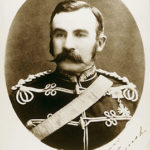
Lieutenant-Colonel G.A. French
At the commencement of the past year the gunnery schools were carried on in a manner somewhat similar to the infantry schools; cadets living anywhere in the vicinity, drilling so many hours per diem, and receiving the gratuity of $50 on their obtaining a first or second class certificate.
This system is now, I am glad to say, at an end; the most that could be expected of it was to teach those who went there a gunner’s duty, and not all that. Instruction for officers there could be but little, except mere gun drill, and no means of instructing members of field batteries have been available since the departure of the Royal Artillery.
The present gunnery schools, established to Kingston and Québec, were organized in accordance with General Orders (24) 20th October 1871, which directed the formation of “two batteries of garrison artillery, in order to provide for the care and protection of the forts, magazines, armaments and warlike stores recently or about to be handed over to the Dominion Government in the provinces of Ontario and Québec.” It further directed that “these batteries in addition to performing garrison duties shall serve as practical schools of gunnery for the training of all ranks of the militia artillery, viz, by instructing gunners and drivers, and affording officers and non-commissioned officers opportunities of joining long or short courses of instruction as may best suit them individually”.
The details of this system can be seen on reference to the General Order above quoted, but the principles on which it is being carried out are as follows, viz;
1st. The appointment of two officers of the Royal Artillery who had qualified as first-class gunnery instructors at Shoeburyness to be commandants of the schools.
2nd. The enrollment in the batteries of the sergeant instructors of the old schools, as well as other approved non-commissioned officers late of the Royal Artillery.
3rd. The purchase of eight horses for each battery, by means of which a tolerable amount of instruction in riding and driving may be afforded to field artillerymen.
4th. Providing a few skilled artificers and laboratory men in each Province for the for the sighting and venting of guns, repair, manufacture and alteration of gun carriages, laboratory operations, etc., etc.
The first and second principles have been successfully carried out, and the Dominion has been fortunate enough to secure the services of Capt. (now Lieut.-Col.) T.B. Strange, of the Royal Artillery, for the school of gunnery, Québec, the 3rd and 4th about to be carried out. As the knowledge required by the above mentioned artificers are only to be obtained by a lengthen course of instruction in an arsenal, I feel that the Imperial authorities appreciating this fact , will, on proper application being made, place suitable men at the disposal of the Dominion Government. I trust the earliest opportunity will be taken to obtain the services of these men, as a large amount of practice has been carried on, and a gun may possibly burst from not having been examined or vented in time.
The instruction is based on the general principle that individuals joining the schools of gunnery shall do duty in the same rank that they hold in their own batteries. Thus, a lieutenant, in addition to being taught all ordinary drills, is posted to a district, made to inspect all the stores therein weekly, takes his turn is orderly officer, learns practically the interior economy of a battery organized for service in Canada, his main attention being directed to those matters which more particularly affect his own branch of the service. A sergeant similarly has charge of a room, goes on guard, takes his turn as orderly sergeant, etc.; in point of fact they are virtually for the time being component parts of A and B batteries.
It was supposed when raising the two batteries which constitute the gunnery schools, that a few men would come from every militia battery, and that instruction would thus easily have been disseminated. This has not been the case, no men whatever coming come from some batteries, but large numbers from others. Strange to say, the largest numbers come from some of the most efficient batteries. Thus, the Toronto Field Battery has sent 19 men, and 10 are coming from the Wellington Battery (on the 1st February); yet, from the whole of Military District No. 4, containing ten batteries, only three men have been sent to the school of gunnery, its proportion being 52.
By the annexed Return, it will be seen that B Battery has nearly its full complement of men – 138 out of 153; A Battery has only 98 out of 131. The men from Military District No. 1 do not join till the first week in February, and it will also nearly have its complement.
Considering that these two batteries are only being raised, it cannot be expected that much instruction could have been carried on; but from what I have seen, I feel assured that their formation marks a distinct era in the history of the Canadian Artillery. It is now within the reach of every officer, non-commissioned officer, gunner or driver, or even of a trumpeter to learn his duties in a thorough manner, by joining for a long or short period, and at whatever time of year may be most convenient for him, being lodged and paid at the Government expense. True, the Dominion Government receives personal services in return (as guards on magazines and warlike stores, caretakers of the fortifications and their armaments, etc. which it did not receive under the old system; but the above services include some of the most important duties of artillerymen, and are apparently rendered gratuitously, if one merely compares the old system with the new; or, or to put the matter in plain figures. The vote for military schools for the year 1871-72 was reduced by $15,000, as no separate gunnery schools would be required in Ontario and Quebec on the formation of A and B Batteries.
I am glad to be able to report that the conduct of the men of A battery has been generally most exemplary, and I have no doubt the same can be said of B Battery, and in concluding this subject, I beg to state that I look forward with confidence to the good results which I fully believe will be attained by the working of the present system, and after a few years time one will assuredly find in the provinces of Ontario and Québec a large number of officers, non-commissioned officers and gunners, who will, in addition to being able to perform their own duties as artillerymen effectively, be also able to assist and instruct their less efficient comrades (provided always that these schools are reserved for the Militia Artillery, and that infantry officers are not posted thereto, to the exclusion of artillery officers).
Hoping that the numerous matters I have had to make this my first report on, will be sufficient excuse for its length,
I have the honor to be Sir,
G.A. French, Lieut.-Colonel,
Inspector of Artillery and Warlike Stores

